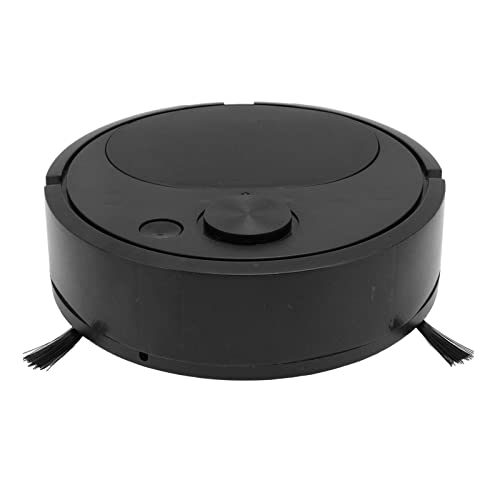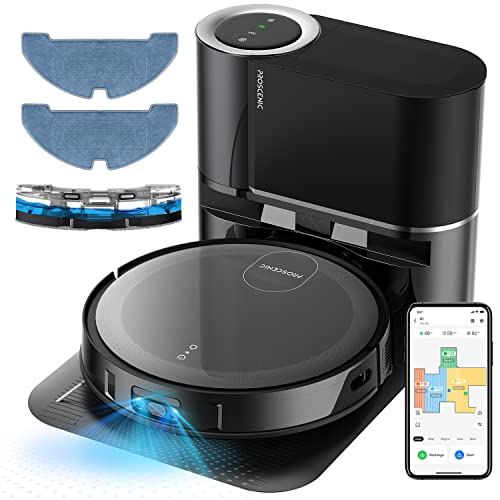포토센서 20 Fun Facts About Self Emptying Robot Vacuum
페이지 정보

본문
 Self Emptying Robot Vacuum
Self Emptying Robot VacuumA self-emptying robot vacuum is one of the best items you can purchase for your home. It is more efficient and hands-free, particularly for those who have larger homes.
The dock of a robot is a tiny dustbin that may be cleaned every few days or more frequently depending on the model. Self-emptying bases are generally much larger and can be heavy.
It's more convenient
If you're tired of emptying your robot vacuum's dust bin after each cleaning session Consider investing in an auto-emptying model. These bases contain dirt in a bigger container, and are usually rated for how many days (or cleaning sessions) they can last before you need to dump them, which means that your robot will be less likely to introduce dust clumps into the air and cause allergies to get worse.
These self-emptying models also tend to have more features than standard robot vacuums and make them more practical. For example, some have an interactive map of your home that allows you to mark different rooms or create virtual "no-go" zones for specific areas. Others can return to their base to recharge after they have completed a cleaning session or quietest when power goes out. Certain models have several cleaning modes like mop, spot-clean, and auto-mop. Others provide voice control via Alexa or Google Assistant.
 But be prepared for a noisy process. When the bin is full, the device will usually take a few minutes to empty it, which can be disruptive. You can alter the settings to make it quieter vacuums however they will be louder. Certain vacuums come with DND mode which is helpful if you're using the device in your bedroom or other places in which it might disturb you.
But be prepared for a noisy process. When the bin is full, the device will usually take a few minutes to empty it, which can be disruptive. You can alter the settings to make it quieter vacuums however they will be louder. Certain vacuums come with DND mode which is helpful if you're using the device in your bedroom or other places in which it might disturb you.Robot vacuums may also get tangled up in cords, shoelaces or pet toys. They could even lose track and send you an SOS for help. If this happens, you'll have to physically place it back into its base to reorient it and restart its cleaning or charging session. This can be a little difficult but it's no more than what you'd need to manually with a different vac.
Overall, self-emptying buy robot vacuum vacuums offer a lot of convenience and are worth the cost when you're tired of emptying the robot's trash bin after each cleaning cycle. But it's important to remember that they're not the ideal solution for all homes, as their dirt capacity is lower than that of an ordinary vacuum, quietest and the base might not be large enough to accommodate every household.
It's safer
A robot vacuum might be more advanced than a barrel or stick vacuum however, it has moving parts and is prone to breakages. This makes it more expensive and more difficult to repair than a standard vacuum. Robot vacuums require more maintenance than regular vacuums, such as cleaning the brushes and filters. Some have additional components such as a computer brain, sensors and app integration that make them more complex to operate and repair.
It's good to know that many of these problems can be avoided by using a robot vacuum cleaner. Manufacturers rate their products based on the number of days or cleaning sessions worth of dirt that the external canister can hold generally with a range of 30 to 60 days. If you have to empty your robot's canister every couple of weeks, it could be easy to overstuff the canister and lose all of your dirt. If your robot can automatically empty the canister it will not only be more user-friendly, you will be able run it more often.
Many manufacturers also sell additional filter and brush kits, which can be used to replace worn out ones. This can extend the life of your robot and help it to function at its best floor vacuum robot for longer, making it a smarter option than a basic model. Some brands also provide zones of saving that allow you to establish zones of no-go areas to ensure that your robot isn't able to accidently clean certain areas.
Lastly, most of these models also have a quiet mode, which makes it less likely to disrupt you when the machine is in operation. This is especially useful when you have pets or children. If you have a smart house or work from home, you can program the robot to come when you're not home.
It's also less expensive
A regular robot vacuum can only hold so much dirt before the internal dustbin needs emptying. When that occurs, the dust gets kicked back up into the air and can cause sneezing for those with allergies. This problem is eliminated by self-emptying robot vacuums. They automatically empty the dirty dust into a bin outside. The best models can go several months or even decades before the bin is empty.
These robots are perfect for families with busy schedules, since they help keep the house clean without stopping to empty the base. These robots are particularly helpful in areas with a lot of mess, like the living room or kitchen, where children and pets leave a mark. They're also a great option for older homes that struggle to stay tidy.
As more robotic vacs that have self-emptying bases hit the market they're becoming less expensive. Most cost $400 or less. This is a significant saving over the You'd pay around $1,400 for a standard robot vacuum. Furthermore, these vacs are far more flexible than traditional models. Some are able to work in dry and wet mode, allowing you to use them on wet and sticky spills, as well as soiled carpets.
They can also work with apps to schedule cleaning time and sync with digital voice assistants like Alexa, Google Assistant or Amazon's Echo. This makes them simple to use for those who don't have the time or patience to operate a robot vac with the remote.
There are downsides to this technology, however. The bases are large and take up a lot more floor space. They can be heavy, which increases the price of the device. The emptying process can be loud and slow.
While self-emptying robot vacs are an excellent method of reducing time and effort, you'll need to clean out other parts of your house regularly. You should also take care to clean up any spills that have gotten wet, and wipe down the charging contacts and sensors on the robot's dock and base.
It's more environmentally-friendly
The most efficient self-emptying robot vacuums are typically more eco-friendly than self-emptying counterparts. The docking station of the vacuum functions as a dust bin that collects debris from cleaning cycles. The dustbin can be emptied and replaced with a new one, quietest much like a regular vacuum. The bin that is filtered helps trap fine dust particles that could otherwise be released into the air in the home and make these robots an ideal option for homes with allergies or respiratory issues.
However, despite their improved environmental friendliness, some self-emptying robots do have disadvantages. They can be noisy, for example. The sound is usually louder than the vacuum's motor and can occur at random intervals during a run. It can be distracting especially if you are cooking or working while the robot is running.
Self-emptying robots are also problematic because they take up a large amount of space on your floor. They usually have a large base that can hold weeks or months of trash. This could be a problem in small houses and apartments where every inch counts. Also, if you select a model that is able to mop too, the water tank will be large and could require extra floor space to stop it from overflowing or spilling onto the floor.
It can be a challenge to set them up. You'll also have to pick the location of the base that isn't too difficult to access. The sensors and charging contacts will need to be cleaned before they can be used. Additionally, the majority of these models require an initial, non-cleaning run to draw an outline of your home. Different brands use different mapping methods, including smart cameras and LIDAR (Light Detection And Ranging), which works similarly to radar.
Overall, a self-emptying robot vacuum is an investment that will make your life easier. If you are a busy parent who is trying to manage work, kids and other chores, being able to turn off the machine and leave it to itself will be extremely helpful.
- 이전글Who's The Most Renowned Expert On Washer Dryer Combinations? 24.04.29
- 다음글20 Trailblazers Setting The Standard In Washer Dryer Combos 24.04.29
댓글목록
등록된 댓글이 없습니다.
